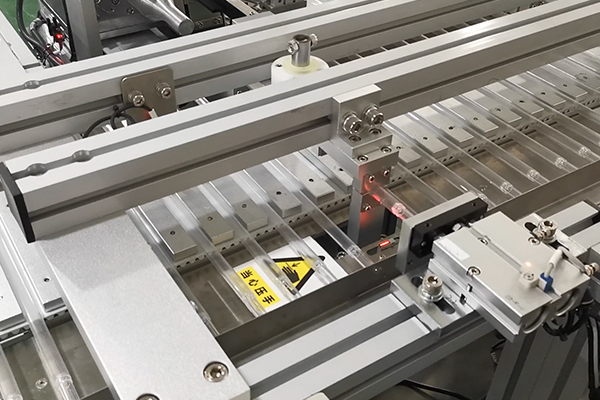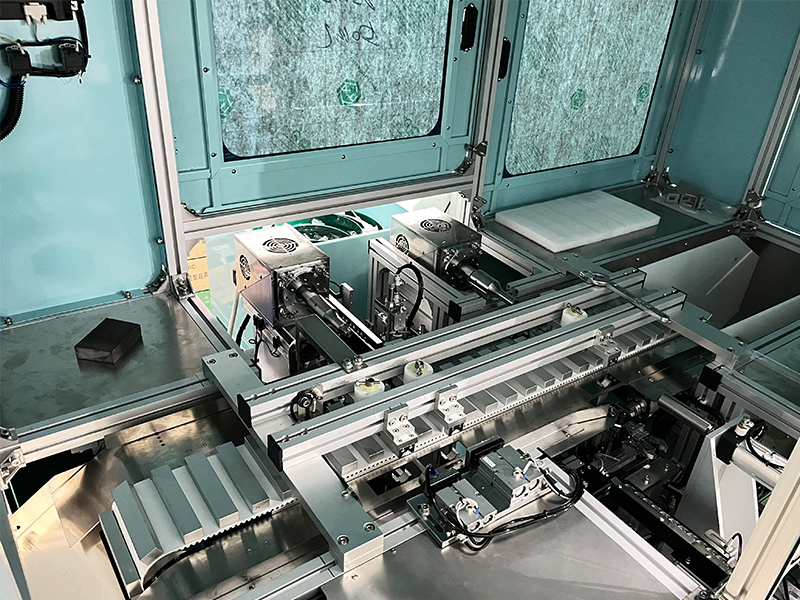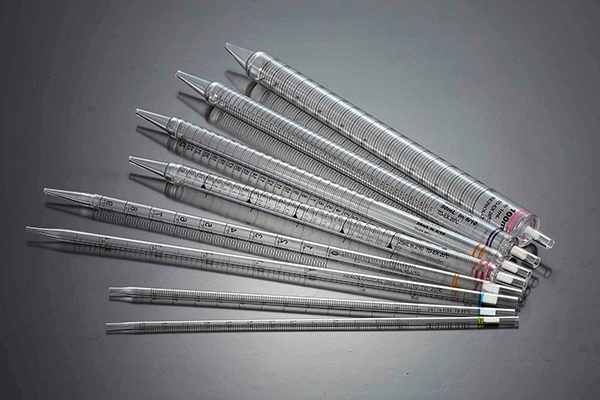Release Date:2022-10-20 11:19:07 Popularity:
GST serum pipette automation production line manufacturers understand that serum pipettes are used in the laboratory to transfer liquids. These pipettes are graduated on the side and help to measure the liquid to be dispensed or aspirated (in ml or mL). They are most recommended as they are very accurate when measuring the smallest incremental levels.

Serum pipettes are mainly used in the following areas: mixing suspensions; combining reagents and chemical solutions; transferring cells for empirical analysis or amplification; layering reagents for creating higher density gradients; serum pipettes are designed to be used as blow-out pipettes, these pipettes have a scale near the end of the tip and a rubber bulb attached to the tip for blowing out excess solution using air or gravity.
Typically, blow-out pipettes are marked with a double ring and handling requires the use of an attached bulb that applies air pressure to blow out and capture each drop of liquid in it. On the other hand, single-ring pipettes are "non-blow-out" variants that allow the entire pipette tip to be emptied.
Pipette tubes are usually made of glass or plastic. For safety and hygiene reasons, it is preferable to use disposable polystyrene plastic serum pipettes.
There are three different types of serum pipettes.
1. Open-ended pipettes: Open-ended pipettes with exposed ends are best suited for measuring highly viscous liquids. The fast fill and release speed of the pipette makes it ideal for handling fluids such as oil, paint, cosmetics and sludge. The pipette is also equipped with a fibre filter plug which helps to reduce fluid contamination. The open-ended pipettes are gamma-sterilised, pyrogen-free pipettes. They are individually packaged in thermoformed paper/plastic to prevent damage. These pipettes are available in 1 ml, 2 ml, 5 ml and 10 ml sizes. They must comply with ASTM E1380 industry standard.

2. Bacteria pipettes: Bacteria pipettes are specifically designed for the examination of milk and other dairy products. These polystyrene milk pipettes are available in 1.1 ml and 2.2 ml sizes. These are non-pyrogenic disposable pipettes that are sterilised using gamma radiation. They are packaged in thermoformed paper/plastic to avoid damage. These pipettes include a fibre filter to prevent contamination of fluid and liquid samples. Bacterial pipettes must conform to ASTM E934 and be calibrated to provide +/-2% (TD).
3. Pipettes: The pipettes are completely transparent and have no graduations. They are specifically designed for transferring and mixing fluids in different applications such as vacuum or pipette aspiration processes. They are disposable, pyrogen-free, non-clogging polystyrene pipette tubes. These pipettes are wrapped in thermoformed plastic to avoid contamination. They are sterilised using gamma radiation and comply with the Sterility Assurance Level (SAL).
It is important that the person handling the serum pipette has a good knowledge of reading volumes and measuring the liquid in them. Several factors need to be taken into account when doing so: after loading the pipette, attention should be paid to the bottom of the meniscus. The curved liquid level forms at the top of the liquid column. Look at the pipette guan tube at eye level to obtain an accurate reading. The pipette should be kept at a perfect right angle to the floor.
The original method of transferring liquids by mouth pipette is not recommended as the user may accidentally consume harmful liquids. However, it is safe to use a bulb or pump. The bulb is used to transfer a less specific amount of fluid, while the pump helps to transfer the exact amount of fluid. There are two triggers in the pump; one for dispensing and the other for aspiration.

Some of the benefits of using serum pipettes include: they are optically optimised; they offer improved volume accuracy; they provide clear ascending and descending scales; the serum pipettes are disposable and pre-sterilised and they come in packs of 25 to 50 and are designed for mounting electric pipettes and pipette assist devices.